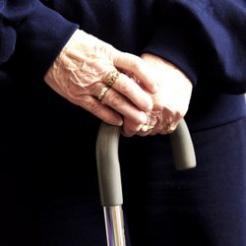When acts of abuse occur under your organisation's care, the trustees may be held liable. Lindsay Driscoll advises where the charity stands and what action should be taken.
Dear editor,
The charity of which I am trustee runs various centres for vulnerable adults. Much to our surprise and horror, the manager of one of our centres has been charged with systematically abusing, sexually and physically, some of our service users when he was on duty.
The evidence appears overwhelming. I have been told that if he is found guilty, I and my fellow trustees may be held vicariously liable for the wrong done to our service users.
Is this correct? What is vicarious liability and what might happen to us? As trustees we believed that we had a robust vulnerable adult safeguarding policy and procedures. These include references being taken up and full checks (eg CRB) done prior to appointment. All staff are trained on protection issues at regular intervals.
Yours sincerely,
A shocked and worried trustee
Dear shocked and worried trustee,
A charity or its trustees will sometimes be liable for the acts or omissions of its employees or other people they control, such as volunteers. This is known as vicarious liability.
In the case of charitable companies or other corporate charities the liability will attach to the charity itself as the employer, rather than to the trustees. In the case of a trust or an unincorporated association, it will be the charity trustees who will be primarily liable but if they have acted properly in terms of the recruitment and supervision of the employee, they will be entitled to an indemnity out of the charity’s assets.
The charity or trustees will only be liable for acts or omissions carried out by their employees in the course of their employment where there is a close connection between the conduct and what the wrongdoer was employed to do. Liability can also arise not only from conduct authorised by the charity but also from a wrongful or unauthorised way of carrying out the job. This is sometimes the case even if the employer has expressly forbidden the wrongful act or if the act amounts to a criminal offence.
In a leading House of Lords case in 2001 it was held that a local authority was liable for the physical and sexual abuse of three boys in its care, committed by a warden employed by the authority. It would seem that this ruling could be applied to other areas of abuse such as elder abuse so that it has become easier to bring a case against the employers of an abuser in a care home.
What action should trustees of a care home take to protect the charity and their position? If unincorporated it would be advisable to consider incorporation.
An effective vulnerable person’s policy should be adopted and proper recruitment and supervision procedures as well as appropriate insurances should be in place as part of the charity’s overall risk-management strategy.
Lindsay Driscoll is consultant at Bates Wells and Braithwaite and trustee at Rosa – the UK fund for women and girls









